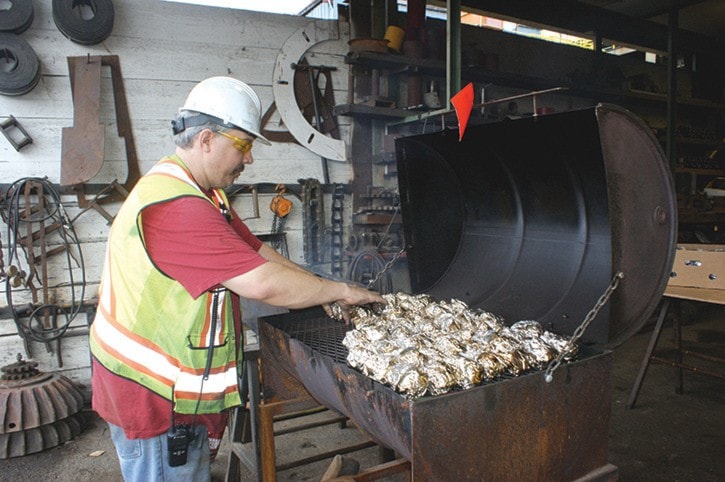It’s been nearly one year since Skeena Sawmills began producing lumber for the first time since 2007, and sawmill employees spent last Friday afternoon at a celebratory barbecue marking the achievement of their most recent production goal.
Such celebrations are not an unusual sight these days, a chance for management to recognize employees and point out a job well done.
“It’s to let [the employees] know they’re appreciated,” explained administrative assistant and human resources manager Deana Campbell. “Their hard work doesn’t go unnoticed.”
Morale’s high – with Campbell herself saying more than once how much she loves her job, and workers smiling and waving throughout a recent morning tour of the mill, a swift operation that combines heavy machinery and technology, with human strength, know-how and flexibility to turn northwest logs into export-ready lumber and chips.
The sawmill, purchased by Roc Holdings Ltd. in 2011 from West Fraser, employs 149 directly and indirectly, including loggers and consultants, with just over 100 of those people working in the mill itself. Mill workers are unionized, represented by the United Steel Workers with an eight-year contract – an agreement that was part of the purchase deal.
Wood comes from various companies, including Coast Tsimshian Resources, Canada Resurgence Developments, and the Terrace Community Forest.
“We try to buy as much wood from the community forest as we can,” explained Skeena Sawmills’ operational planner Tara Salmon.
The operation has three tree cutting licences in the area and is currently sourcing 347,000 cubic meters, with running one shift 250 days a year.
During that shift logs are cut, sorted, graded and eventually processed green or through the dry kiln. To keep moisture out, green lumber is treated with chemicals and the edges spray painted. Dry-kiln lumber is wrapped in paper before shipping.
The kiln runs 24/7 and dries 240,000 board feet per charge – it takes 65 hours to dry the lumber to a 20 per cent moisture content. The goal is to eventually have three kilns running – with the two new kilns using the sawmills biofuels (or chips) to run them – which would save electricity.
Right now, the sawmill sells its chips to Harmac owned by Nanaimo Forest Products.
As for lumber, 50 per cent of that goes to Japan, 40 per cent to China, and 10 per cent to North America.
Japan is particularly interested in British Columbia Genban boards, which are high-end and cut to metric sizes. “It’s a true dimensional piece of lumber, usually made of hemlock or balsam,” explained Salmon. “High quality, super clear, super beautiful.”
These are produced at the sawmill and exported – and looking forward, the sawmill hopes to optimize its production. This would mean increasing efficiencies and technology within the mill, investing in better scanning equipment, and building a new line that is more efficient.
